Jeong-Kyun Lee
Online Extrinsic Camera Calibration for Temporally Consistent IPM Using Lane Boundary Observations with a Lane Width Prior
Aug 09, 2020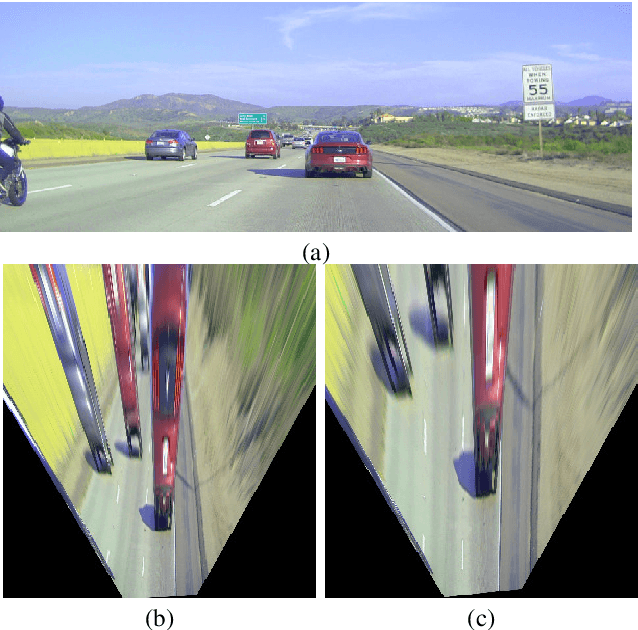
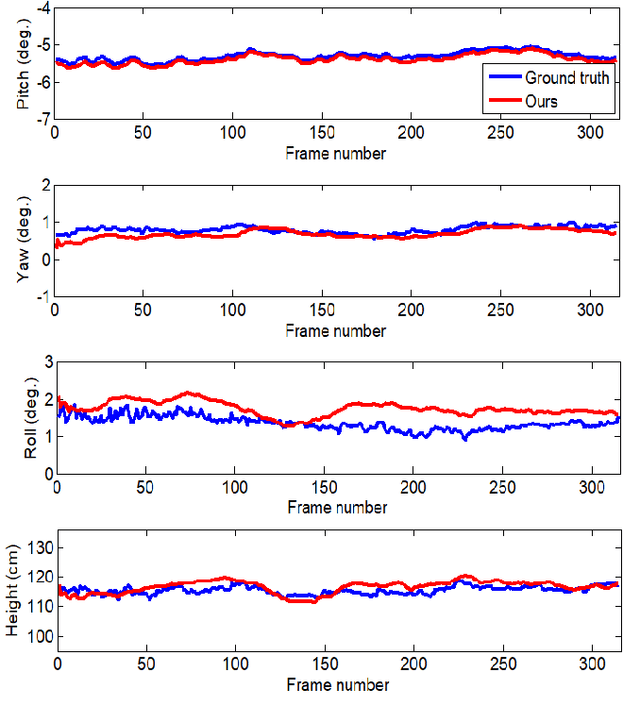

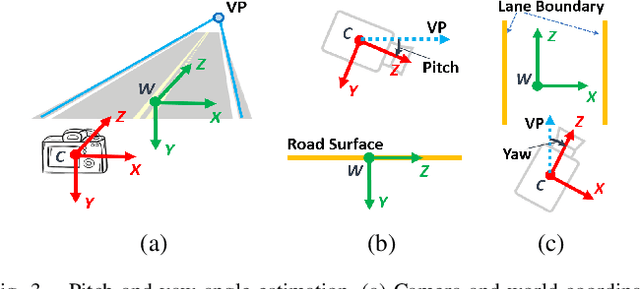
Abstract:In this paper, we propose a method for online extrinsic camera calibration, i.e., estimating pitch, yaw, roll angles and camera height from road surface in sequential driving scene images. The proposed method estimates the extrinsic camera parameters in two steps: 1) pitch and yaw angles are estimated simultaneously using a vanishing point computed from a set of lane boundary observations, and then 2) roll angle and camera height are computed by minimizing difference between lane width observations and a lane width prior. The extrinsic camera parameters are sequentially updated using extended Kalman filtering (EKF) and are finally used to generate a temporally consistent bird-eye-view (BEV) image by inverse perspective mapping (IPM). We demonstrate the superiority of the proposed method in synthetic and real-world datasets.
1-Point RANSAC-Based Method for Ground Object Pose Estimation
Aug 09, 2020



Abstract:Solving Perspective-n-Point (PnP) problems is a traditional way of estimating object poses. Given outlier-contaminated data, a pose of an object is calculated with PnP algorithms of n = {3, 4} in the RANSAC-based scheme. However, the computational complexity considerably increases along with n and the high complexity imposes a severe strain on devices which should estimate multiple object poses in real time. In this paper, we propose an efficient method based on 1-point RANSAC for estimating a pose of an object on the ground. In the proposed method, a pose is calculated with 1-DoF parameterization by using a ground object assumption and a 2D object bounding box as an additional observation, thereby achieving the fastest performance among the RANSAC-based methods. In addition, since the method suffers from the errors of the additional information, we propose a hierarchical robust estimation method for polishing a rough pose estimate and discovering more inliers in a coarse-to-fine manner. The experiments in synthetic and real-world datasets demonstrate the superiority of the proposed method.
Joint Layout Estimation and Global Multi-View Registration for Indoor Reconstruction
Sep 06, 2017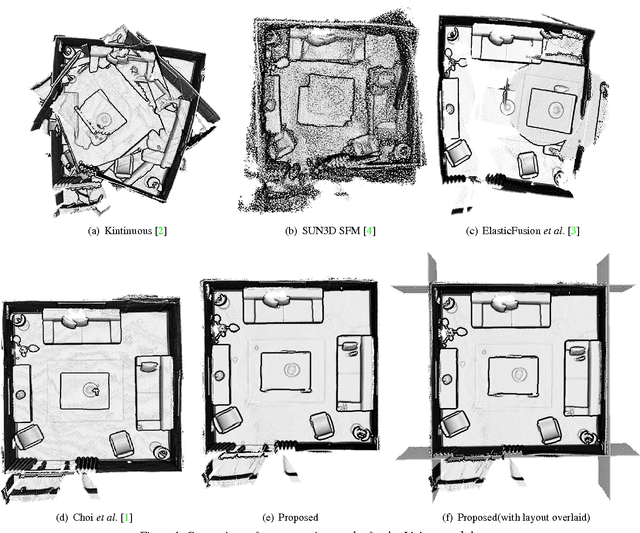
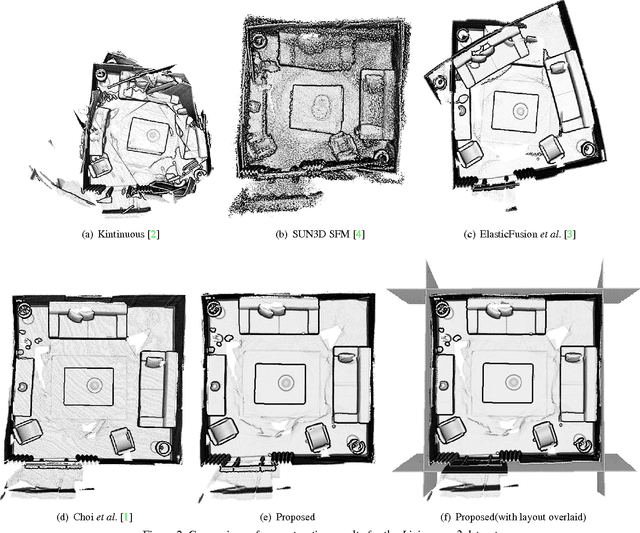
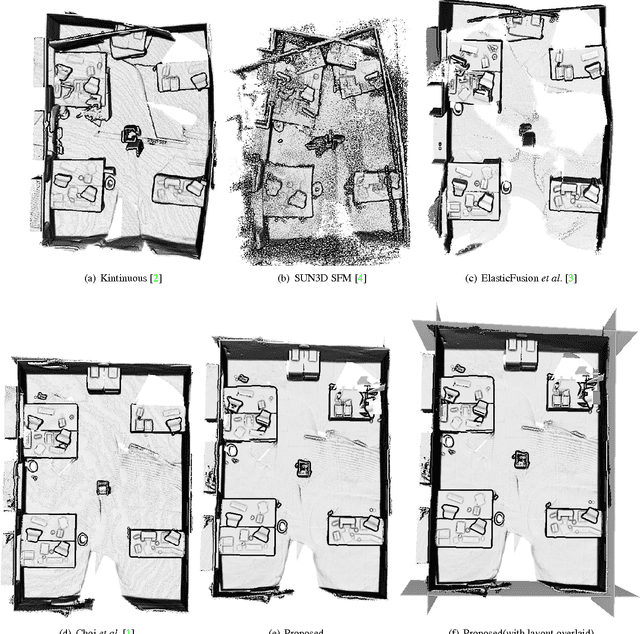
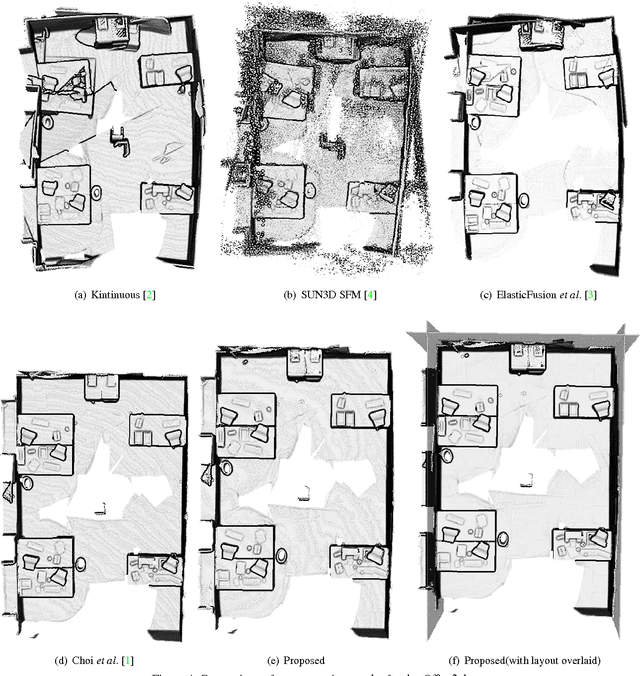
Abstract:In this paper, we propose a novel method to jointly solve scene layout estimation and global registration problems for accurate indoor 3D reconstruction. Given a sequence of range data, we first build a set of scene fragments using KinectFusion and register them through pose graph optimization. Afterwards, we alternate between layout estimation and layout-based global registration processes in iterative fashion to complement each other. We extract the scene layout through hierarchical agglomerative clustering and energy-based multi-model fitting in consideration of noisy measurements. Having the estimated scene layout in one hand, we register all the range data through the global iterative closest point algorithm where the positions of 3D points that belong to the layout such as walls and a ceiling are constrained to be close to the layout. We experimentally verify the proposed method with the publicly available synthetic and real-world datasets in both quantitative and qualitative ways.
 Add to Chrome
Add to Chrome Add to Firefox
Add to Firefox Add to Edge
Add to Edge